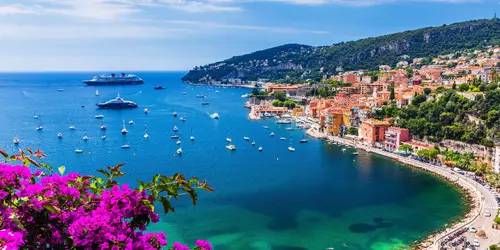The climate year of Côte d'Azur
The Côte d'Azur begins in the east at Menton near the Italian border and ends in Marseille. The Rhône Valley and Mont Ventoux are part of it, and the hinterland extends over the low mountain ranges of the Massif des Maures and the Massif de l'Estere. Blue skies and a blue sea, with temperatures of 20 degrees in winter and 30 degrees in summer and gentle winds, make the Côte d'Azur a popular vacation spot. 300 days of sunshine a year help make the Côte d'Azur one of the most popular destinations in Europe. Saint-Tropez, Nice, Cannes and Antibes are well-known destinations for many celebrities, with the nearby Principality of Monaco also contributing.
General information about Côte d'Azur
Often the area around the beautiful beaches is neglected, but this is a big mistake, because to explore the countryside there are beautiful hiking trails that have already attracted Picasso and Renoir. If the visitor follows the small paths into the hinterland near Nice, he will experience a panorama that he will not soon forget. Nature is still intact here and the hiker will find olive groves, flowers and vineyards in this idyllic landscape. A world-renowned center of ceramic art is located in the small village of Vallauris, as well as a Renaissance castle with a Romanesque chapel from the 12th century, where "la Guerre et la Paix" by Picasso can be seen. High on a hilltop is the medieval village of Eze with alleys and nooks and a small 14th century church. The exotic garden in the ruined castle is worth seeing and allows a unique view of the Côte d'Azur. From here, 40 km of hiking trails lead over three rocky slopes through the natural parks "Plain of Justice" and "de Révère".
Tourism Côte d'Azur
On the Côte d'Azur it can be very hot in summer, July and August, with over 30 degrees and rain is almost non-existent. Only in the fall often falls heavy rain, which can lead to flooding. The mild climate is especially beneficial to the fauna, because for a long time plants grow here that come from completely different parts of the world and have settled here. For example, the Greeks brought olive trees and grapevines to France, and in the 19th century the British brought the palm trees that now grow everywhere on the beaches.





